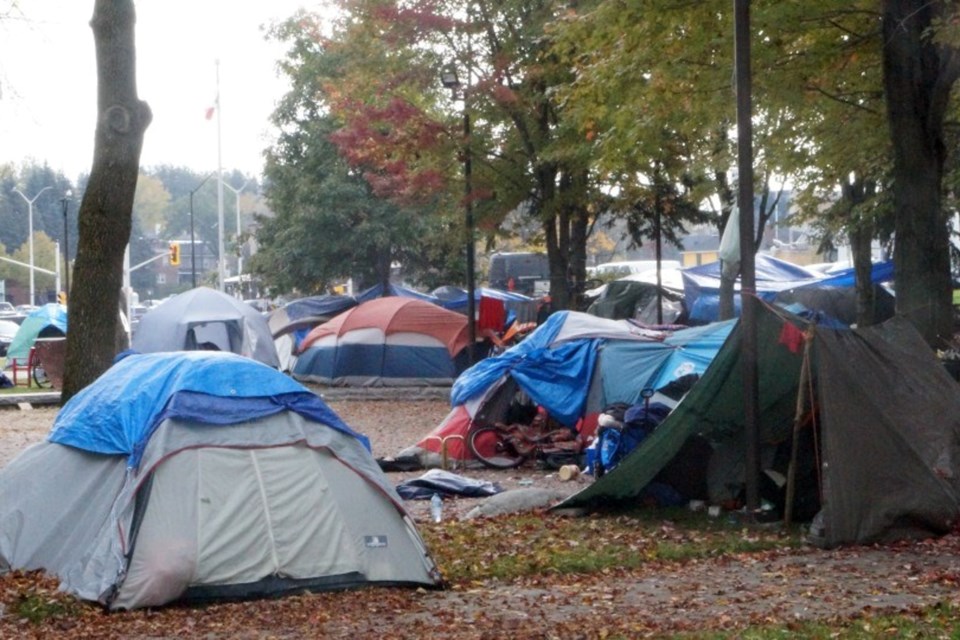The By-Name priority list, a list compiled by the City of Greater Sudbury of vulnerable people in need of housing, is creeping up in number.
Names of newly unhoused people are being added to the list, and it’s difficult to find housing for those already on the list.
“Right now we have 190 actively homeless individuals on the list, that's a pretty big number that continues to just creep up every month,” said Gail Spencer, manager of housing stability and homelessness with the City of Greater Sudbury.
She told Sudbury.com it’s because there just isn’t enough affordable housing. The high cost of living means new evictions as well as difficulty housing those already on the By-Name list.
Most of the new additions are from the Sudbury area.
“We're not seeing a lot of new people from out of town, the majority of people are people from our community,” said Spencer. “They are either being newly evicted or have been released from hospital or corrections.”
A 2020 report by Public Health Sudbury and Districts showed that 12.8 per cent of Sudbury’s population — about 21,000 people — live in poverty. The economic effects of the pandemic and rising cost of living in the city could be compounding this.
In 2022, names returning to the list was the challenge. In the latter half of that year, 37 people had returned to the list after being housed. That was either because they had lost their housing, or were considered high-acuity, in that they had needs that made housing too difficult for them to maintain. High needs can be due to addiction, mental illness or trauma.
Evictions also happened as newly housed people felt pressure to let others stay in their new home, even to their own detriment.
People with a high level of need still make up about 75 per cent of the list, said Spencer. “It's not uncommon that they need several tries to be successful in housing.”
However, Spencer said the reason behind the seemingly stagnated By-Name priority list numbers is that there is no affordable housing available, period.
“That's where we're seeing the gap, it’s between people on fixed income and the rising increase of rents,” she said. “That's causing a lot of pressure.”
Low-income households in Sudbury are the most impacted by historic low vacancy rates, according to Canada Mortgage and Housing Corporation's (CMHC) 2023 annual report.
The overall average market rental rate for all row/apartments in Greater Sudbury has increased by 25.5 per cent in the past 10 years, and 47.8 per cent in the past 20 years. Greater Sudbury Housing has a multi-year waiting list. Income sources Ontario Works ($731) and Ontario Disability Support Program ($1,054) have not changed significantly.
But the priority is still housing people, said Spencer, and to her, the By-Name list is a “great way to do so.”
The By-Name priority list is a real time, up-to-date list of all people known to be experiencing homelessness and listed by unique identifiers such as name, current state of housing, and any presenting risks and vulnerabilities.
In order to be added to the BNPL, an individual or family (“client”) must:
- have been homeless for 14 days or more;
- be unable to resolve their own homelessness, and;
- consent to have their name added to the BNPL.
Since April of last year, the number of actively homeless in Sudbury has increased, and though it occasionally decreases, it isn’t by much.
On the list itself, categories represent the person’s current situation. “Unsheltered” means living outside or living in places not intended for permanent human habitation. “Sheltered” refers to someone staying in a shelter, either as a homeless individual or escaping domestic violence.
Provisional describes interim housing for people who are homeless.
That can include temporarily living with other people, short-term rental accommodation without security of tenancy, or people in institutional care with no guarantee of permanent housing upon release (hospital, corrections facilities, treatment facilities, etc.).
As of April 6 (the most recent data) there are 190 actively homeless individuals on the list. Of those, 15 are staying in encampments, 54 unsheltered, 57 in shelter, and 64 are provisionally accommodated or “unknown.” Of the individuals staying in encampments or unsheltered, some frequent shelter from time to time.
But shelter space is at a premium. At city council’s April 17 community and emergency services committee meeting, Tyler Campbell, children and social services director, said that over the past year the Sudbury shelter system has been running close to capacity.
“We had hoped, from a staff perspective, that capacity would have receded and the demand would have receded exiting the COVID period, but that has not occurred,” he said.
From March 20-26, for instance, the city averaged 74 shelter stays per night against a capacity of 75. Warming centre visits averaged four against a capacity of 10.
To ease the situation, the city has implemented a series of measures to ensure that vulnerable populations can get the help they need. This includes client navigators to ease the management and transition between programs and services, and Mayor Paul Lefevbre has made the search for more affordable housing options a part of his mandate.
The new 40-unit transitional housing complex off Lorraine Street will also help, said Spencer.
“Transitional housing and supportive housing, both are a big need in our community,” she said. With so many on the list requiring a high level of support, Spencer said they will only succeed with the right support. “And we need to continue to build that in our community,” she said.
For those who wish to find out more about the city’s homelessness initiative, including up to date By-Name priority list numbers and resources for those in need, click here.
Jenny Lamothe covers vulnerable and marginalized communities for Sudbury.com
